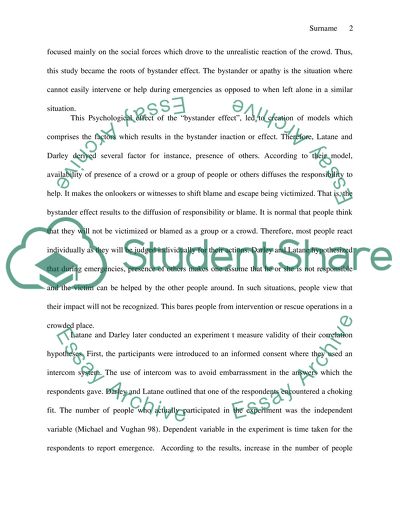Cite this document
(“Describe Latene' & Darley (1968) Bystander Effect) and evaluate Assignment - 2”, n.d.)
Describe Latene' & Darley (1968) Bystander Effect) and evaluate Assignment - 2. Retrieved from https://studentshare.org/psychology/1608085-describe-latene-darley-1968-bystander-effect-and-evaluate-psychological-research-that-has-tested-this-effect-that-has-tested-this-effect
Describe Latene' & Darley (1968) Bystander Effect) and evaluate Assignment - 2. Retrieved from https://studentshare.org/psychology/1608085-describe-latene-darley-1968-bystander-effect-and-evaluate-psychological-research-that-has-tested-this-effect-that-has-tested-this-effect
(Describe Latene' & Darley (1968) Bystander Effect) and Evaluate Assignment - 2)
Describe Latene' & Darley (1968) Bystander Effect) and Evaluate Assignment - 2. https://studentshare.org/psychology/1608085-describe-latene-darley-1968-bystander-effect-and-evaluate-psychological-research-that-has-tested-this-effect-that-has-tested-this-effect.
Describe Latene' & Darley (1968) Bystander Effect) and Evaluate Assignment - 2. https://studentshare.org/psychology/1608085-describe-latene-darley-1968-bystander-effect-and-evaluate-psychological-research-that-has-tested-this-effect-that-has-tested-this-effect.
“Describe Latene' & Darley (1968) Bystander Effect) and Evaluate Assignment - 2”, n.d. https://studentshare.org/psychology/1608085-describe-latene-darley-1968-bystander-effect-and-evaluate-psychological-research-that-has-tested-this-effect-that-has-tested-this-effect.


